مدونة جسور المعارف للعلوم والثقافة تقدم نبذة عن موضوعات ثقافية، علمية، تقنية، تاريخية
Don't wanna be here? Send us removal request.
Text
You’re Not a Mess — You’re a Feeling Person in a Messing World

You are not a mess, Photo by AI
Introduction: You’re Not Broken. You’re Awake.
You open your phone in the morning and it hits you: A war zone. A flood. Another unjust law. A rising cost. A smiling influencer selling happiness while the planet burns.
You sip your coffee, and your heart sinks. You want to care… but you’re tired. You want to act… but you feel paralyzed. You want to stay kind… but you’re angry.
You ask yourself: “What’s wrong with me?”
Let me tell you the truth — one that the world rarely says out loud:
You are not a mess. You are a feeling person in a messing world.
In this blog post, we’ll explore what it means to feel deeply in a world that encourages numbness. We’ll break down why your emotions are not only valid — they’re a form of truth-telling. And you’ll walk away not “fixed” but seen.
The World Is Messing — And You’re Sensitive, Not Sick
Information Overload Is Breaking Our Nervous Systems
Let’s be real: Humans weren’t designed to digest 24/7 global suffering. We’re tribal, intimate creatures. Our nervous systems evolved to process the cries of one person nearby — not millions of strangers in crisis on a tiny screen.
Yet every day we absorb:
Live footage of violence
Political shouting matches
Climate disasters
Injustice against people we don’t even know, but still feel deeply for
Example: A young man in his 20s scrolls through news about Gaza, Ukraine, heatwaves in India, and AI layoffs — all before brushing his teeth. By noon, he feels heavy, anxious, and emotionally shut down. He tells himself, “I’m too sensitive.” But in truth, his body is saying: “This is too much.”
Feeling Overwhelmed Doesn’t Mean You’re Weak — It Means You’re Awake
Empathy Hurts Because It’s Supposed To
Empathy isn’t just a warm, fuzzy trait. It’s a form of emotional intelligence. But in a chaotic world, empathy becomes exhausting — especially when we feel powerless.
“To feel deeply is not a flaw. It is a function of a fully-alive soul.”
Example: A teacher cries at home after school because one of her students came to class hungry again. She blames herself for “not being strong enough.” But what if her tears are not a breakdown — but a breakthrough of compassion in a system that’s lost its humanity?
Our Culture Worships Hustle — and Punishes Emotion
Productivity Culture Makes No Room for Tenderness
We live in a world that tells us:
Grind harder
Don't complain
Stay positive
Push through
But here’s the problem: We’re not machines. We’re human beings. And when systems are unjust or unsustainable, feeling broken is actually a sign of sanity.
Example: A single mother working two jobs feels guilt for being exhausted. She calls herself “a failure.” But maybe the failure isn’t hers — maybe it’s a society that rewards overwork and ignores caregiving.
Emotional Fatigue Is Not Laziness
Burnout isn’t just physical. It’s soul fatigue. When your values clash with the world around you, you feel emotionally drained — not because you’re weak, but because your conscience is alive.
What You Can Do — Without Changing Who You Are
Here’s the truth: You don’t need to “toughen up.” You need tools to survive in a world that’s forgetting how to feel.
Let’s break down some healing shifts you can make today:
1. Validate Yourself First
Before the world tells you how to feel, tell yourself:
“Of course I’m tired. Of course I’m overwhelmed. It makes perfect sense.”
Naming your truth is the first act of emotional self-defense.
Try this: Write down what you’re feeling every morning for 5 minutes. Not to fix anything — just to be honest.
2. Curate What You Absorb
Your mind is like a garden. What you consume, grows.
Limit exposure to chaotic news cycles
Follow accounts that promote peace, humor, creativity, and realness
Take screen-free days. Even hours matter.
Tip: Replace 10 minutes of doom scrolling with music that soothes you or poetry that makes you feel seen.
3. Build “Soft Armor”
You don’t have to go numb to survive — but you can create emotional boundaries.
Say no to conversations that drain you
Be honest with friends when you're too tired to show up
Make rest a ritual, not a reward
Soft armor = Self-respect + boundaries + quiet moments
4. Practice “Small-Scale Healing”
You can’t fix the world. But you can water your corner of it.
Smile at your neighbor
Send a voice note to a lonely friend
Write something real
Make something beautiful
Show up, imperfectly
Healing doesn’t require a cape — it just needs presence.
Final Thought — The World Needs People Who Still Feel
You, dear reader, are not a mess. You are evidence that the world hasn’t hardened everyone. You are what remain when apathy has failed.
And that? That’s brave.
To feel is not to fail. To cry is not to collapse. To care is not to break. To feel in a world that numbs is resistance.
So next time the world feels too much, whisper this to yourself:
“I’m not a mess. I’m a feeling person in a messing world. And maybe that’s exactly who the world needs most.”
#https://gamalmoustafa2857.medium.com/youre-not-a-mess-you-re-a-feeling-person-in-a-messing-world-575b2b0d27ab
#https://ghamnasr.blogspot.com/
0 notes
Text
If My Beloved Turns Away
A New Kind of Romantic Strength
Gamal Moustafa
Some loves don’t end with words or fights — they end in silence, grace, and a heart that knows how to let go.

A New Kind of Romantic Strength, Photo by Canva AI.
“If my beloved turns away from me, I will not ask him about it. My heart is a butterfly that does not care. Ah, love is my survival. Ah, love is my disappearance.”
In a world where people are quick to claim, cling, and collapse at the first sign of distance, there is a quieter, nobler path — a love that doesn’t beg, doesn’t chase, doesn’t demand.
This is not cold love. It is a burning love, but one that has matured. It is a fire that knows when to warm and when to release the smoke into the sky.
The Beauty of Silent Strength in Love
Why We Don't Ask Them to Stay
When someone turns away, we often panic. We fear abandonment, loneliness, the unknown. We ask:
“What did I do wrong?”
“Please don’t leave me.”
“Can we talk one more time?”
But there is a sacred silence more powerful than these words. It’s a silence that says:
“I love you enough to let you go without making you feel guilty.”
That’s not weakness. That’s the kind of love that comes from deep self-trust and romantic dignity.
The Power of Stillness
One night, a woman I loved told me, “I don’t think I love you the same anymore.”
I paused.
I took her hand.
And instead of asking her to explain herself for hours, I said: “Then let me remember you as you are, in this moment — still close to me.”
She cried. Not because she changed her mind — but because she had never seen a man strong enough to break gently.
My Heart Is a Butterfly — And It’s Free
How Emotional Detachment Became a Love Language
When I say “My heart is a butterfly that does not care,” I don’t mean it’s careless.
I mean it doesn’t cling.
A butterfly never forces a flower to bloom. It simply lands where there is beauty, and when the wind calls, it moves — gracefully, softly.
This is the kind of love I have grown into. One that stays because it’s invited, not because it’s tied by chains.
What a Butterfly Lover Does
He doesn’t flood your phone. He respects your silence.
He brings joy, not obligation.
He notices your absence, but doesn’t chase it.
He disappears with elegance when it’s time to go.
This is not indifference. It’s the deepest kind of affection — one that trusts the flow of destiny.
Love Is My Survival, Love Is My Disappearance
The Paradox of the Romantic Soul
Love has kept me alive during my darkest hours. It’s been my hope, my music, my prayer, my breath.
But it also taught me how to vanish.
I don’t mean hiding. I mean stepping away when staying would destroy both of us.
To love someone so deeply that you choose their freedom over your presence — that’s when love becomes divine.
My Story of Disappearance
There was a woman I loved beyond words. She loved me too, but life changed her path.
We danced through months of confusion. She was in and out. I kept trying.
One day, I woke up and realized: She was walking, and I was waiting.
So, I wrote her a letter. No tears. Just truth:
“Your light no longer shines for me. But I will always remember its warmth. Go on. Dance freely. And if ever your steps cross mine again, I will recognize you, even in the dark.”
I sent it. And then I let her go — with grace, not resentment.
That’s love.
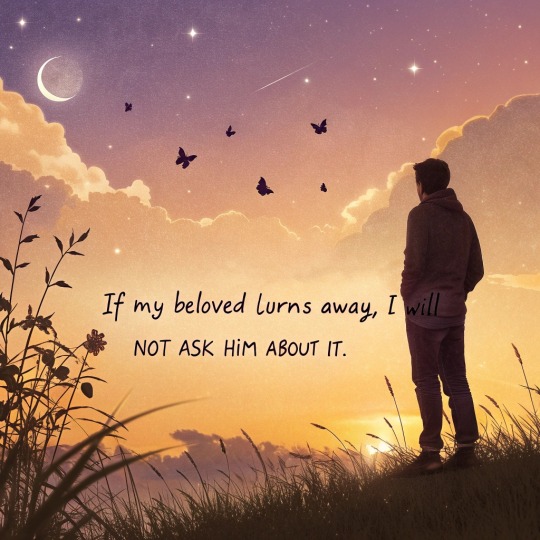
Be the Kind of Lover They Never Forget, Photo by Canva AI.
Love Actions That Speak Louder Than Words
When You Love Like This, Here's How You Show It
Real love is not always loud. It’s not always public. It’s not always posted on social media.
Sometimes, the most romantic act is to walk away quietly while still loving them loudly inside.
Here are some powerful ways we, the romantics, express this sacred kind of love:
Prepare their favorite meal without asking for thanks.
Leave a gift or note without signing your name.
Let them win the argument when you know the truth, because their peace matters more than your pride.
Write a poem and burn it instead of sending it. Let the ashes carry your words into the wind.
A Final Thought for the Lovers Who Love Like Fire
Be the Kind of Lover They Never Forget
Some people will never know what it’s like to be loved like this. They will chase the loud, the flashy, the dramatic — and never find rest.
But we — the lovers with butterfly hearts and lion hearts — we love differently.
If they turn away, we don’t shout. We don’t collapse. We bow, smile, and bless them.
We walk alone, yes. But not empty. Because inside us burns a love so rich, so pure, so sacred — that even if no one stays, we are still full.
Final Quote from the Heart
“I don’t chase anymore. I create moments. If they remember me, good. If they don’t, I still gave love — and that’s all that matters.”
#https://medium.com/@gamalmoustafa2857/if-my-beloved-turns-away-45a179e55938
#Deep romantic love#Letting go with love#Emotionally mature relationships#Loving without attachment#Butterfly metaphor in love#Love and self-respect#Quiet strength in love#Romantic male perspective#Heartbreak with dignity#Real life love story blog
0 notes
Text
The Hidden Alchemy
Do “Ugly” People Really Turn Pretty?
What if the world’s idea of “ugly” hides a secret magic—waiting to bloom into something breathtakingly beautiful?
Introduction
What if the magic of beauty isn’t in the mirror, but in motion?
Every day, billions look into mirrors, wondering: “Am I pretty enough?” Yet a far deeper question hides behind the glass: “Can an ugly person become beautiful?”

Am I pretty enough?, Photo by Deep AI.
The journey from what we call “ugly” to “pretty” isn’t only about skin creams or new clothes. It’s about discovering, growing, and sometimes daring to rewrite the meaning of beauty itself. Let’s explore why what’s called “ugly” can transform into what we celebrate as pretty—and why the answer may be more surprising (and magical) than you think.
What Is “Ugly” Anyway? | The Myth Behind the Word
Beauty Is a Moving Target
Beauty isn’t carved in marble; it dances across eras and cultures. Think about it: in the Renaissance, round faces and fuller bodies were adored as signs of health and wealth. A few centuries later, slim figures and high cheekbones dominated fashion magazines.
So, when we ask if “ugly people turn pretty,” we must first ask: ugly by whose standard? What’s dismissed today may be tomorrow’s trend. What feels “plain” in youth might mature into graceful, classic beauty admired by future generations.
The Cultural Lens
Across the globe, beauty wears different masks. In some Asian cultures, fair skin was historically prized as a sign of nobility, while in the West, sun-kissed skin often signals an active, outdoor life. Long necks, small feet, big eyes—different societies have crowned each as beautiful at different times.
This shows that “ugly” is rarely universal. Often, it’s just an idea shaped by place, history, and fashion.
The Power of Transformation | How People “Turn Pretty”
The Glow-Up Phenomenon
“Glow-up” isn’t just internet slang; it reflects real life. Many people grow into their features, discover flattering haircuts, embrace fitness, or start caring for their skin—and what seemed awkward or “ugly” blossoms.
Look at celebrities whose teenage photos went viral: once teased for big noses, braces, or baby fat—later celebrated as style icons. But glow-ups aren’t just for Hollywood. Walk through any school reunion: you’ll often see once-shy classmates shining with newfound elegance and confidence.
Confidence as the Secret Ingredient
Imagine someone who stands tall, smiles warmly, and speaks with kindness. Even if their features aren’t “perfect,” people remember them as beautiful. Why? Confidence shapes posture, expression, and even voice tone—making someone appear more attractive without changing a single facial feature.
Many therapists and life coaches note that self-acceptance can literally soften facial tension, relax frowns, and bring a natural glow—proving beauty isn’t only skin deep.
Self-Care and Style
Beauty routines aren’t about hiding flaws but learning to highlight what makes each person unique. A well-chosen haircut can reveal striking cheekbones; the right colors can brighten tired eyes. Small changes—hydration, better sleep, skincare—can freshen complexion and energy.
Combined, these steps can shift someone’s appearance from unnoticed to captivating, not because they’ve become someone else, but because they’ve discovered and refined who they truly are.
Beauty Beyond the Face | What Truly Attracts Others
Charisma Beats Symmetry
Studies show kindness, humor, and passion make people memorable—and deeply attractive. Even in romantic attraction, warmth and emotional connection often outweigh “perfect” features.
We’ve all met people who aren’t movie-star handsome, yet everyone loves to be around them. Their laughter lights up rooms; their kindness makes them unforgettable. This invisible glow is often the true secret to turning “ugly” into pretty.
The Mind’s Transformation
As people mature, their personalities, stories, and experiences add richness to their appearance. A quiet person becomes an inspiring speaker; a shy artist starts sharing their work. Passions and confidence transform posture and expression—making someone not only look more beautiful but truly become more beautiful.
Real-Life Examples | Stories That Inspire
The Late Bloomer
Consider the classic story of the “late bloomer”: a teenager teased for braces and glasses who, years later, turns heads with style and self-assurance. These stories aren’t fairy tales—they happen every day, often driven by discovering self-worth rather than chasing external approval.
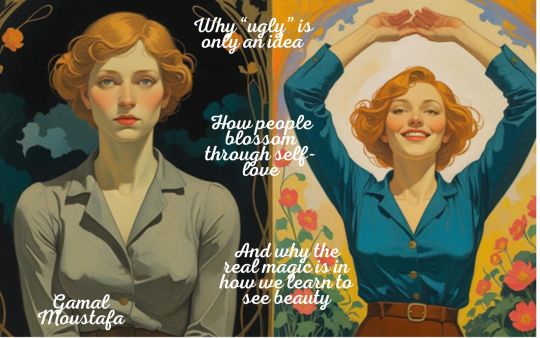
Self-Confidence, Photo by Canva AI.
Public Figures Who Redefined Beauty
Think of actors, singers, and models who were once labeled “unconventional.” Over time, what made them different became what made them iconic. Their refusal to hide or apologize transformed public perception—proving that beauty isn’t conformity but authenticity.
The Real Question | Is It About Turning Pretty, or Seeing Pretty?
Perhaps the most powerful transformation isn’t physical at all. Maybe “ugly people turning pretty” means we learn to see them differently—or they learn to see themselves differently.
When someone accepts who they are, their presence changes: they smile more easily, stand taller, and stop shrinking to fit others’ opinions. The “ugly” label falls away—not because they’ve changed, but because we’ve opened our eyes to a deeper, truer beauty.
Final Thought
Beauty isn’t frozen in a single moment or standard. It grows with laughter lines, softens with kindness, and deepens with experience. “Ugly people” don’t merely turn pretty—they reveal beauty that was there all along, waiting to be seen.
In the end, the question isn’t can they turn pretty, but when will we notice the beauty that lives beyond labels?
#https://ghamnasr.blogspot.com/
#
Read my latest blog post to explore:
Why “ugly” is only an idea
How people blossom through self-love
And why the real magic is in how we learn to see beauty
# [medium.com/@gamalmoustafa2857]
#•#BeautyBeyondLabels#GlowUp#InnerBeauty#TransformationStory#SelfLoveJourney#ConfidenceIsBeautiful#BlogPost#WritingCommunity#MediumBlog#TumblrWriters
1 note
·
View note
Text
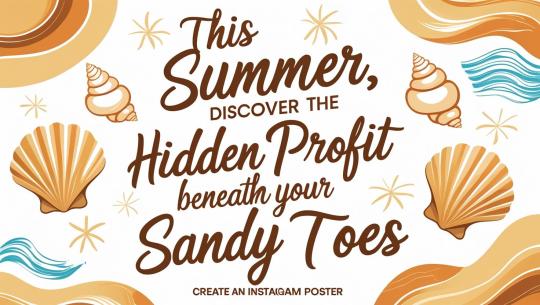
Golden Sands, Golden Gains
Uncover the Hidden Profits of a Summer Beach Trip
Gamal Moustafa
#SummerSideHustles#BeachProfit#CreativeSummer#BlogLinkInBio*#________________________________________
0 notes
Text
Golden Sands, Golden Gains
Summer Beach Trip
Gamal Moustafa
Introduction: Summer’s Sun, Sea... and Secret Streams of Income
When summer arrives, beaches around the world sparkle like scattered gold dust under the sun. Families pack umbrellas and coolers, friends plan road trips, and solo travelers chase sunrises by the shore.
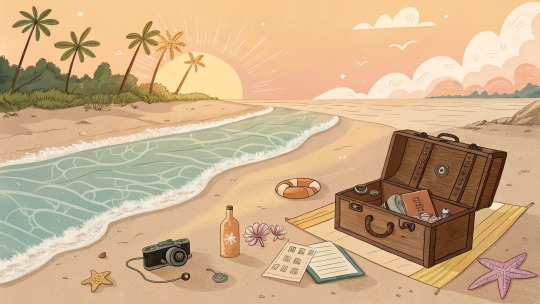
Golden Sands, Golden Gains, Photo by Recraft AI.
Yet beyond the sunbathing and seashell collecting lies something few truly see: the hidden treasure of profit waiting to be discovered on every trip to the coast. Whether you’re an artist, adventurer, or simply someone with a smartphone, the beach isn’t just a playground — it can become a surprisingly creative source of income.
In this guide, let’s walk barefoot through the many ways your next seaside adventure can reward you with unforgettable memories and meaningful profits.
Turn Sunlight and Sand into Side Hustles
Beach Photography — Selling the Stories the Ocean Tells
Imagine arriving at dawn, the sky brushed with rose and lavender, gentle waves whispering secrets to the sand. You frame the perfect shot: a lonely shell on the wet shore catching first light.
Photos like these have real demand:
Upload to stock photo platforms (Shutterstock, Adobe Stock, iStock)
Sell prints on Etsy or your own website
Create postcards or calendars featuring your work
Real-life inspiration: Wesam, a weekend traveler, began selling her seaside photos online. Within months, her images of quiet beaches at sunrise and families playing at sunset earned her a steady stream of passive income — enough to cover her next trip.
Seashell Art and Driftwood Décor
The beach is full of raw materials that, with a creative eye, transform into beautiful crafts:
Delicate shell necklaces and bracelets
Driftwood wall hangings shaped into hearts or words like “Beach Love”
Candle holders or photo frames adorned with tiny shells and sea glass
Sell these treasures at:
Local summer markets
Online platforms like Etsy or Handmade at Amazon
Pop-up beachside craft stalls during tourist season
Example: Maya, a teacher, started making shell crafts during her summer holidays. What began as gifts for friends turned into a side business, bringing in extra income every summer.
Share the Magic Online — and Earn
Start a Beach Blog or Vlog
Your story is your asset. Start by sharing:
Secret local spots tourists miss
Honest reviews of beachside cafés
Tips for affordable beach trips or family-friendly activities
Behind-the-scenes videos of sunrise photography or shell collecting
With authentic content and regular posts, you can:
Monetize through ads or sponsored content
Offer guides or e-books (e.g., “Top 10 Hidden Beaches on the Coast”)
Collaborate with travel brands or local businesses
Real-world example: Alex began filming his coastal hikes and sunset drone videos, posting them to YouTube. His videos quickly attracted thousands of views, and soon he partnered with local tour agencies for sponsored content.
Create and Sell Summer-Themed Products
Use your beach inspiration to design:
T-shirts with quotes like “Life’s Better in Flip-Flops”
Tote bags with hand-drawn wave patterns
Mugs or phone cases featuring your beach photos
Platforms like Printful and Teespring handle printing and shipping, turning your creativity into a hassle-free income stream.
Turn Your Talents into Beachside Services
Fitness Classes with a Sea Breeze
If you’re certified in yoga, Pilates, or fitness, summer mornings are perfect for group classes on the sand:
Offer sunrise yoga sessions with meditation
Lead gentle Pilates for families
Run evening stretch classes to unwind after a hot day
Advertise with simple flyers at local cafés, on social media, or even by word-of-mouth on the beach itself.
Example: Lina, a yoga instructor, held weekend beach yoga classes during summer. Soon, her early classes grew from five to twenty people, each paying a small fee — turning mornings by the shore into a profitable ritual.
Teach Surfing or Paddleboarding
If you have water skills and local certifications:
Offer beginner surfing lessons
Guide stand-up paddleboarding tours
Teach kids basic water safety in shallow areas
Tourists often seek short, affordable lessons to make their beach holiday unforgettable — and you could be the one who provides that special experience.
Capture and Share the Beach’s Endless Stories
Document Your Summer Journey
Even if you don’t want to sell photos or crafts, document your trip:
Start a “Summer by the Sea” journal blog
Post daily on Instagram, sharing your thoughts, tips, or funny stories
Interview locals or fellow travelers and share their beach stories
Over time, this personal project can:
Build an engaged audience
Lead to collaborations or sponsorships
Become an e-book, guide, or even a podcast
Inspiration: Ben, an amateur writer, began blogging about his weekend visits to small, lesser-known beaches. Readers loved his raw storytelling style, and soon he had a loyal following eager for each new adventure.
Final Thought: Find Your Hidden Treasure by the Shore
Summer is more than just sunshine and sea breezes. It’s a season of inspiration, creativity, and unexpected opportunity.
By looking beyond relaxation and asking, “What could I create, share, or teach?” your beach trip transforms:
Photos become art people buy
Seashells become crafts that bring joy
Stories become blogs and videos that inspire and inform
Your skills become services that make holidays memorable for others
So, this summer, pack your sunscreen — and your creativity. Explore the shore not just as a visitor, but as an artist, a storyteller, or an entrepreneur.
Because sometimes, the true treasure of the beach isn’t buried in the sand — it’s hidden in your own ideas, ready to sparkle in the summer sun.
#https://ghamnasr.blogspot.com/
Summer beach profit
Make money at the beach
Beach photography ideas
Seashell crafts to sell
1 note
·
View note
Text
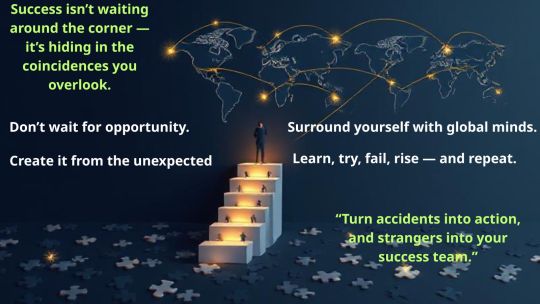
Your Success
#Entrepreneurship#Business Strategy#Personal Development#Global Collaboration#Success Mindset#Career Advice#Young Entrepreneurs#Innovation#Motivation#Leadership
0 notes
Text

your success
#Entrepreneurship#Business Strategy#Personal Development#Global Collaboration#Success Mindset#Career Advice#Young Entrepreneurs#Innovation#Motivation#Leadership
0 notes
Text

your success
#Entrepreneurship#Business Strategy#Personal Development#Global Collaboration#Success Mindset#Career Advice#Young Entrepreneurs#Innovation#Motivation#Leadership
0 notes
Text
Coincidences Aren’t Accidents
How to Turn Serendipity into Success
Gamal Moustafa
Introduction: A Chance Meeting Could Be Your Turning Point
What if the key to your success wasn’t hidden in a five-year plan—but in a random conversation, a delayed flight, or a late-night idea that popped into your mind unexpectedly?
In a world obsessed with planning, scheduling, and control, we often forget that life has its own rhythm. Many of the world’s most successful people didn’t follow a straight line—they recognized opportunity in the unexpected and turned coincidences into winning strategies.

The key to your success, Photo by Deep AI.
This is a modern business philosophy:
Don’t wait for opportunities—train yourself to recognize, shape, and seize them.
This blog will explore how leveraging global expertise and transforming random moments into meaningful actions can be your most valuable formula for success. You’ll learn from real-life stories, practical advice, and timeless truths that can change your mindset forever.
From Coincidence to Creation: The Hidden Power of the Unexpected
When Accidents Become Innovation
Sometimes, you don’t find opportunity—it finds you. But only if you're ready.
Think about these examples:
Post-it Notes were invented by mistake when a 3M scientist was trying to create a super-strong adhesive but ended up with one that could stick lightly and peel off. That “failure” became a billion-dollar innovation.
Instagram started as a check-in app called “Burbn,” but after observing users mostly used it for photo sharing, the founders pivoted to what we now know as one of the most powerful social platforms in the world.
Penicillin, the first antibiotic that changed medicine forever, was discovered accidentally by Alexander Fleming when he noticed that mold had killed bacteria in a petri dish he had forgotten.
These weren’t accidents. They were coincidences turned into breakthroughs by people who were alert, open-minded, and curious.
How to Train Your Mind to Spot Opportunity
It’s not magic. You can develop this ability by:
Paying close attention to patterns, even small ones
Asking “What else can this be used for?” in unusual situations
Taking notes of ideas or situations that seem out of place—they may be the seed of something new
Sharing ideas with trusted people and listening to their unexpected feedback
Success Through Collaboration: Use Global Expertise, Not Just Local Vision
Why Surrounding Yourself With Experts Is a Superpower
In our connected world, the smartest entrepreneurs know this secret:
You don’t need to be an expert in everything—just know where to find them.
Let’s take an actual example:
Case Study: Turning Family Tradition into Global Product
A young woman from India inherited her grandmother’s recipe for herbal tea, said to help with digestion and energy. Instead of selling it locally, she:
Reached out to nutrition scientists in Canada to test its benefits.
Contacted designers in Berlin to brand it with global aesthetics.
Hired digital marketers in the Philippines to launch an e-commerce store.
Partnered with fulfillment services in the U.S. to handle shipping.
Today, her tea brand is sold in 15 countries.
The idea was local. The success was global.
Practical Ways to Build a Global Expert Network
Use platforms like Upwork, LinkedIn, and Fiverr to find freelancers in tech, marketing, legal, and design.
Attend online webinars and virtual conferences—you’ll meet passionate, brilliant people from around the world.
Join niche online communities on Reddit, Slack, Discord, or even Facebook—ask, contribute, and collaborate.
The Invisible Reality of Failure: What You Don’t See in Success Stories
Success Is Loud—But Failure Is the Foundation
Behind every shining story is a storm of setbacks.
Steve Jobs was fired from his own company before returning to lead Apple to greatness.
Oprah Winfrey was told she was “unfit for TV” before becoming one of the most powerful media figures ever.
J.K. Rowling faced 12 rejections from publishers before Harry Potter became a global phenomenon.
The truth is, failures don’t usually make it to the spotlight. But without them, no success is possible.
Failure teaches:
What not to do again
Where your real strengths lie
Who is truly committed to your journey
Actionable Insight: Make Failure Your Teacher, Not Your Judge
Journal your failures and analyze what you learned.
Speak to mentors and experts who can give you feedback.
Keep experimenting. Your next try might be the winning one.
A Message to Young People: Be Bold, Be Curious, Be Strategic
Don’t Wait for Clarity—Step Into the Mist
To the dreamers, students, and emerging entrepreneurs:
You don’t need a perfect idea or a flawless plan. The truth is:
Your journey begins the moment you take one small, uncomfortable step forward.
Every industry needs fresh eyes. You might be the one to innovate where others only see limits.
Practical Tips for Young Creators
Explore different industries. Try internships, side projects, or collaborations.
Ask questions boldly. Reach out to people you admire—even a simple DM can open doors.
Embrace feedback. It’s not rejection—it’s redirection.
Work with specialists. Whether it’s design, finance, or coding, let experts carry parts of your dream forward.

A Message to Young People, Photo by Deep AI.
Final Thought: Success Is a Series of Smart Coincidences
You can’t control life’s randomness—but you can control what you do with it.
The greatest stories begin not with certainty but with courage, curiosity, and collaboration. So next time something strange, surprising, or even inconvenient happens—don’t dismiss it. Explore it.
Because behind every coincidence is a potential spark. And behind every spark, a fire waiting to burn bright.
Turn the unexpected into the unforgettable. Build success one coincidence at a time.
#https://ghamnasr.blogspot.com/
#Entrepreneurship#Business Strategy#Personal Development#Global Collaboration#Success Mindset#Career Advice#Young Entrepreneurs#Innovation#Motivation#Leadership
0 notes
Text
Hot Money
The Invisible Force Shaping Global Markets
Gamal Moustafa
Introduction
In today’s globally connected economy, hot money flows silently—but its impact is seismic. Whether you're a policymaker, investor, or simply someone following global news, understanding hot money is essential.
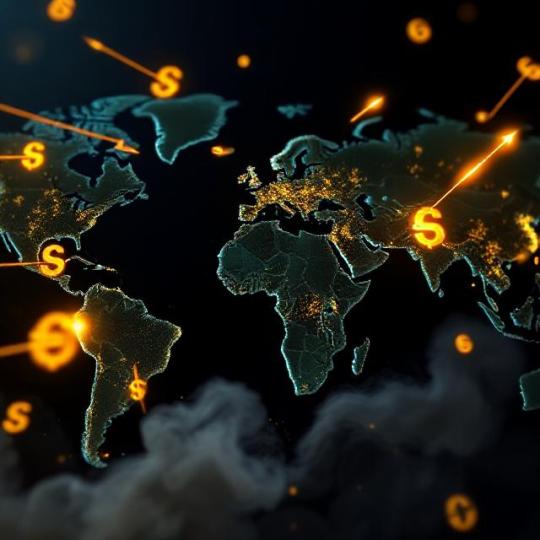
The Effect of Hot Money, Photo by Deep
What is it exactly? It’s short-term capital that zips across borders in search of quick profits. These flows may bring temporary prosperity, but they also carry the seeds of disruption. Like a magician’s spell, hot money dazzles economies—until it vanishes, sometimes leaving destruction behind.
This post explores how hot money works, its benefits and dangers, and why you should care—through real-world examples, historical cases, and a look at how it might shape the future.
What Is Hot Money?
Hot money refers to short-term investments that move rapidly between markets, seeking the best returns. It often takes the form of:
Investments in foreign exchange markets
Equity trades in emerging economies
Short-term bonds or interest-rate arbitrage
Hot money differs from long-term investments in that it’s not committed. It’s speculative and mobile—ready to shift direction at a moment’s notice, often triggered by headlines or minor policy changes.
It’s called “hot” because it’s always ready to burn rubber and flee when market conditions change.
The Magic of Hot Money: What It Brings
When hot money flows into a country, it can feel like a miracle.
1. Rapid Growth in Financial Markets
Hot money fuels stock market rallies. In countries with relatively stable governments and high interest rates, foreign capital flows in—boosting asset values and giving a sense of prosperity.
✅ Example: In the early 2010s, Turkey attracted large volumes of hot money due to high interest rates. Its markets soared, and the Turkish lira strengthened—creating a short-term boom.
2. Currency Appreciation
Capital inflows increase demand for a country’s currency. This can help reduce inflation and lower the cost of imports, benefiting consumers.
✅ Example: In India, foreign capital inflows have at times stabilized the rupee, especially during investor optimism post-economic reforms.
3. Increased Liquidity
More money in the system means more lending, more projects, and more business. For a while, it looks and feels like sustainable progress.
The Danger of Hot Money: When It Disappears
However, hot money is fickle. It flows out just as fast as it came in—and that’s when trouble begins.
1. Currency Collapse
❌ Case Study: The 1997 Asian Financial Crisis Thailand, Malaysia, Indonesia, and South Korea saw huge hot money inflows in the mid-90s. Real estate boomed. Currencies soared. But in 1997, confidence cracked. Investors pulled out. Within months, currencies collapsed. Thailand’s baht lost over 50% of its value. Entire economies plunged into crisis.
2. Market Volatility
❌ Example: In 2013, the U.S. Federal Reserve hinted it would taper its stimulus. This triggered a hot money exodus from emerging markets like Brazil, India, and South Africa. Their currencies dropped rapidly, sparking panic.
3. Central Bank Pressure
Governments often respond to hot money flows by adjusting interest rates. But this can conflict with domestic needs:
Raising rates to keep hot money can slow local growth
Letting it leave can weaken the currency and stoke inflation
It’s a lose-lose scenario.
Why Is Hot Money So Powerful?
In today’s tech-driven financial system:
Trades happen in milliseconds
Algorithms follow news sentiment
A rumor on X (Twitter) can trigger billions in capital shifts
In this environment, hot money has influence far beyond its volume. It affects:
Exchange rates
Inflation
National debt
Employment levels
Political stability
How Countries Handle Hot Money
Governments can’t stop hot money—but they try to manage it.
1. Capital Controls
Some countries limit the ability to freely move money in or out.
🛡️ Example: China and India maintain various capital flow restrictions to reduce sudden inflows or outflows.
2. Reserve Accumulation
Countries may build foreign currency reserves to defend against capital flight.
🏦 Example: The Philippines and Vietnam have used this strategy to soften the blow of capital exits.
3. Taxation on Inflows
Some nations add taxes on foreign investments to discourage speculative capital.
📉 Example: Brazil introduced a tax on foreign purchases of bonds during heavy inflow periods.
So… What Does Hot Money Mean For You?
You might not be trading currencies—but you still feel its effects:
Rising interest rates when central banks defend currencies
More expensive imports when hot money flees
Job market changes as businesses adjust to financial uncertainty
Stock market dips linked to global investor sentiment
If you invest in mutual funds, ETFs, or even savings plans—your money is exposed to these global forces.
Final Thoughts: The Power and Price of Fast Capital
Hot money is like a visiting magician—it dazzles while it’s around, but disappears without warning. It brings short-term benefits, but long-term risks.
Understanding it empowers you:
As a voter who cares about economic policy
As a consumer who feels inflation
As an investor navigating global finance
In a world shaped by headlines and hashtags, let’s not forget: 💡 “When money moves fast, wisdom must move faster.”
About the Author
Gamal Moustafa is a writer and educator specializing in economics, energy, and sustainability. With a background in academic teaching and a passion for making complex topics accessible, he shares real-world insights for curious minds. Connect on Instagram @gemy2857 or follow for more thought pieces on global finance and life skills.
📣 Let’s Talk!
What’s your take on hot money? Have you experienced its impact in your country? Drop a comment or share this article if it sparked your thoughts!
#https://ghamnasr.blogspot.com/
#HotMoney#GlobalFinance#EconomicTrends#MarketVolatility#FinancialLiteracy#MoneyMatters#CapitalFlows#Macroeconomics#MediumWriter
0 notes
Text
10 Types of People You Should Avoid as Friends — For a Healthier Life
Gamal Moustafa
Introduction
In life, friendships are like mirrors. They reflect back parts of who we are and often shape who we become. Some friends bring warmth, comfort, and growth — they support you silently in the background, cheer for you in front of the world, and show up when you least expect it but need them most.

People You Should Avoid as Friends, Photo by Deep AI
But not everyone deserves a place in your inner circle.
Some people can drain your joy, distort your self-worth, and quietly lead you down paths that distance you from your peace. It’s essential to recognize and avoid certain types of people, not out of hate, but out of self-respect and emotional hygiene.
Let’s explore 10 types of people you should avoid as friends — with real-life examples and a touch of how AI tools can help you identify and protect yourself from such negative energy.
The Chronic Complainer
Their world is always gray, and they’ll paint yours the same.
We all have moments where life feels heavy — venting is natural. But when someone never stops complaining, about their job, friends, family, or even the weather, they create a habit of negativity. Their mindset becomes your atmosphere.
Magic Example from Life: Imagine sitting with a friend on a beautiful beach. Instead of enjoying the sunset, they say: “This sand is annoying. The sun is too hot. I hate saltwater.” Before long, you feel irritated too — and the beauty around you fades.
Why it matters: Energy is contagious. Chronic complainers chip away at your optimism.
The Selfish Friend
When it's always about them, it's never a real friendship.
They ask, take, and demand — but when you need support, they’re missing. True friendship is a two-way street. Selfish friends treat relationships like vending machines — put in attention, take out favors.
Magic Example from Life: You help them move houses, care for their pet, and support their projects. But when you’re sick or need a hand, they “don’t have time.” Slowly, your heart feels unvalued.
The Constant Liar
If you can't trust their words, you can't trust the bond.
Some lie to impress. Others lie to cover up. But friends who lie repeatedly make you question your reality. Even small lies create cracks in trust that weaken over time.
Magic Example from Life: Your friend says, “I was home all night.” Later, you find a tagged photo of them at a party you weren’t invited to. The worst part isn’t the lie — it’s that they didn’t care enough to be honest.
The Manipulative One
Their charm hides control.
These friends guilt-trip you, twist stories, or make you feel crazy for setting limits. They are emotional architects, building castles of confusion in your mind.
Magic Example from Life: You say “I can’t make it tonight.” They reply, “Wow, I guess I’m just not important to you.” Suddenly you’re apologizing — for having boundaries.
The Boundary Breaker
If they can’t respect your 'no', they don’t deserve your 'yes'.
Healthy friendships include limits. Whether it’s time, space, privacy, or emotional needs, your boundaries matter. When someone repeatedly ignores them, it’s a red flag.
Magic Example from Life: You ask them not to share your private story. A week later, you hear it from a stranger. “I didn’t think it was a big deal,” they say. But it was — to you.
The Bully in Disguise
Hidden behind sarcasm, real harm happens.
They call it “just a joke,” but their words hurt. They criticize how you dress, who you love, what you dream of. Over time, these “jokes” steal your confidence.
Magic Example from Life: They laugh: “You're going to start a business? You? Good luck!” You laugh it off, but inside, doubt creeps in.
The Unsupportive One
They disappear when you rise or fall.
A true friend claps when you succeed and holds your hand when you stumble. But some people vanish in both cases — out of jealousy or indifference.
Magic Example from Life: You get a new job. You share the good news. Their response: “Nice… anyway, guess what happened to me?” No joy. No support. Just silence or self-focus.
The Dishonest Mask-Wearer
If they hide who they are, you're not friends — you're audiences.
Dishonesty isn't always lies. Sometimes it's pretending. Pretending to like you. Pretending to agree. Pretending to care.
Magic Example from Life: They tell you they love spending time with you, but gossip behind your back. When truth feels distant, you’re not friends — you’re a stage for their show.

Not everyone you meet is meant to stay, Photo by Canva
The Energy Drainer
You feel tired after seeing them — every time.
They bring drama, chaos, complaints, and crisis. You always have to fix things. They never try to fix themselves. Slowly, your soul feels heavy.
Magic Example from Life: After an hour with them, your shoulders hurt, your mind is spinning, and your smile is fake. That’s not friendship. That’s emotional labor.
The Responsibility Shifter
Everything is your fault — even their own mistakes.
They never apologize. Never admit wrongs. When conflict comes, they blame you, circumstances, the universe — anything but themselves.
Magic Example from Life: They miss your birthday. When you express hurt, they say: “You should’ve reminded me.” They expect grace but don’t give it.
How Can AI Help Us Identify Toxic Friendships?
With today's smart tools, AI can analyze patterns in your texts, conversations, and online behavior to help you reflect on emotional dynamics:
Sentiment analysis in apps like Replika or journaling platforms can detect negativity trends in your relationships.
Behavior tracking (with consent) can reveal imbalances — like always initiating contact or receiving dismissive messages.
Mental health apps can suggest when you're in one-sided, harmful patterns.
AI won’t tell you who to trust, but it can help highlight areas where emotional imbalance or manipulation may exist — allowing you to step back and reevaluate.
Final Thoughts: Protect Your Light
Friendship isn’t about numbers — it’s about quality. If someone brings confusion, exhaustion, or sadness more often than comfort and clarity, that’s your sign. Life is too short to spend it justifying your worth to people who don’t see it.
Surround yourself with those who love loudly, respect gently, and uplift consistently. Your energy is sacred. Protect it wisely.
“You don't lose friends. You lose those who never truly valued you.”
#https://ghamnasr.blogspot.com/
#FriendshipWisdom#EmotionalHealth#ProtectYourPeace#ToxicPeople#PersonalGrowth#BlogPost#MindfulLiving#AIandLife#LetGoToGrow#TrueFriendsOnly
0 notes
Text
How to Stay Patient When You’re Missing Your Partner Like Crazy
Gamal Moustafa
Love can make your heart soar—but missing someone you love deeply can make it ache just as much. Especially when the nights feel longer, and you catch yourself scrolling through old pictures, reading past texts, or rewatching your favorite moments together. When you miss your partner like crazy, patience can feel impossible.

Love can make your heart soar, Photo by AI
Yet, history and psychology show us that this kind of longing—if embraced—can actually deepen connection and personal growth. From legendary love stories to modern-day couples navigating long-distance challenges, the ability to stay patient is not only possible—it’s powerful.
What Does It Mean to Miss Someone Deeply?
Missing someone isn’t just a passing thought—it’s an emotional and physical sensation. Your body responds with real symptoms: tight chest, sudden tears, lack of focus, or even physical exhaustion. It happens because love triggers the brain's reward system—so their absence can feel like withdrawal.
But here's the hidden strength: missing your partner shows you how much they mean to you. It’s not something to suppress. It’s something to understand and transform.
Remember—Distance Doesn’t Mean Disconnection
We often confuse distance with detachment, but in love, they are not the same.
The Story of Frida Kahlo and Diego Rivera
Artist Frida Kahlo and painter Diego Rivera had a complex, passionate love. Their careers often kept them apart in different countries. Yet their letters remain some of the most poetic and intense testaments to longing and loyalty.
Frida once wrote: "I don’t know how to write love letters. But I want to tell you that my whole being is stirred by you."
They stayed emotionally connected even when the world pulled them in opposite directions.
Takeaway: Love isn’t broken by distance—it grows when nurtured. A short message, a shared playlist, or even a simple “thinking of you” text keeps the flame alive.
Create Shared Meaning from the Time Apart
Missing someone becomes less painful when it has purpose. Instead of just “waiting,” reframe the distance as time you’re both investing in the relationship’s growth.
H3: Example from Michelle and Barack Obama
During Barack Obama’s early political career, Michelle often spent nights alone with their children. In her memoir Becoming, she recalls feeling lonely but grounded by the belief that their sacrifices were building a future they believed in—together.
"For every hard moment," she wrote, "I believed in what we were creating."
Your Turn:
Set shared goals: Learn a new skill together online, save money for a future trip, start a photo project.
Keep a private couple’s blog or Google Doc journal of your day-to-day feelings and updates.
Use Your Longing to Deepen Your Own Identity
When you’re in love, your identity often blends with your partner’s. But distance can remind you who you are—and that’s a gift.
Embrace “You Time”
Reconnect with hobbies: paint, cook, dance, garden.
Reignite passions: read, write, study something you always wanted to.
Get stronger: go for walks, meditate, or train physically.
Think of it this way: the stronger you become while they’re away, the better your reunion will be.
Story: Amelia Earhart and George Putnam
Amelia, the first woman to fly solo across the Atlantic, traveled often—leaving her husband, George Putnam, behind. They both respected each other’s individuality. George supported her ambitions, and their love thrived despite time apart.
Distance didn't divide them—it empowered them.
Communicate Creatively and Consistently
Words matter. And in the absence of touch or time together, communication becomes your bridge.
Ideas to Stay Emotionally Close:
Scheduled video calls with themes (Movie night, Dinner together, “Tell me your day” chats).
Digital memory boxes—create shared folders with old photos, quotes, and voice messages.
Write love letters by hand, scan them, and send by email. It brings back romance in a world full of texts.
“In true love, the smallest distance is too great, and the greatest distance can be bridged.” — Hans Nouwens
Ground Yourself in the Present Without Losing Hope
Being apart from someone you love can make your thoughts spiral into anxiety: “What if things change?”, “What if they’re happier without me?” These fears are natural—but not always true.
Mindfulness Tools That Help:
5-4-3-2-1 Technique: Name 5 things you see, 4 you can touch, 3 you can hear, 2 you can smell, and 1 you can taste.
Gratitude journaling: Write down one thing each day that connects you to your partner—even if it’s just “I’m grateful they exist.”
Affirmations: “We are strong even when apart.” “This distance is building something beautiful.”
Case in Point: Nobel Prize Winner Malala and Her Partner
Malala Yousafzai and her husband Asser Malik maintained a cross-border relationship during parts of their early life together. They supported one another’s missions and didn’t allow miles to shake their commitment.
Plan the Reunion—But Celebrate the Waiting
The thought of reunion can bring excitement, but don’t let it make you wish the days away.
What You Can Do:
Start a “countdown jar”: Add a note each day with something you’re grateful for or looking forward to doing together.
Plan small reunion surprises: A scrapbook, a new outfit, a simple poem.
Share your countdown milestones with them. Let them feel the excitement too.
“Anticipation is half the joy of reunion.”
Final Thought: Love Isn't Measured in Miles—It's Measured in Meaning
Missing someone is one of the most human feelings you can experience. It’s proof of connection, of emotional investment, of love that goes deeper than routine or proximity.
Whether your partner is a thousand miles away or just in a different room during a hard season, know this:
🌟 Patience in love is not passive. It’s power. It means believing that your bond can stretch, bend, and even grow stronger with time.
Let the ache remind you: You are lucky to love this much. And when they return—whether in hours, weeks, or months— You’ll meet not just with hugs, But with new strength, stories, and unshakable connection.
You can read also on :
#https://ghamnasr.blogspot.com/
0 notes
Text

#EgyptianMuseum#KidsActivities#PrintableForKids#HomeschoolLife#HistoryFun#KawaiiColoring#TeacherGram#ParentingWin
0 notes
Text
The Treasure of Making Money from the Internet — The Seagull, the Fisherman's Friend
Gamal Moustafa
Introduction: When Nature Meets Opportunity
In the early golden light of morning, before the market opens, a quiet treasure awakens along the seashore. It’s not silver or gold — but something far more powerful in today’s world: content. Every day, seagulls dance in the sky above fishermen casting their nets into the waves. It’s a daily show, simple and natural, yet full of beauty, energy, and emotion.

The Seagull, the Fisherman's Friend, Photo by Deep AI
This is where our story begins. Not just a story of wings and waves — but of how you, with nothing more than a phone or camera, can turn this seaside magic into real online income.
The Hidden Gem — Why Seagulls Can Make You Money
You don’t need a studio, expensive equipment, or exotic travel. You already live near a secret goldmine.
Seagulls have become a beloved symbol in many areas of media:
They represent freedom, connection to nature, and life by the sea.
In photography, they bring motion, contrast, and meaning.
For brands, they add emotion and storytelling to products.
That’s why your daily seaside moments can become in-demand visual assets — and platforms all over the world are paying for that.
Fishermen and Seagulls — The Forgotten Love Story
Every morning, when fishermen rise before the sun, the seagulls follow like loyal companions. They dive, they circle, they wait — as if they too understand the rhythm of work, sea, and survival.
This relationship — the unspoken dance between man and bird — is pure poetry. And that is exactly what the internet is craving: real stories, unfiltered beauty, authentic emotion.
Imagine capturing that story in photos or short videos. A fisherman throwing a net as gulls swarm above. The silver fish flashing under sunlit wings. A close-up of a gull staring into the lens, like a wise friend of the ocean.
This is not just photography — this is visual storytelling. This is your way to touch hearts and wallets across the world.
Where and How to Sell These Photos Online
Top Platforms to Sell Your Work
You can upload and sell your seagull and seaside photos on:
Shutterstock (trusted by media companies)
Adobe Stock (for creatives and designers)
Etsy (printable wall art and digital downloads)
500px (for photo competitions and licensing)
Your own website or social media shop*
Don’t just sell "a photo of a bird" — sell a feeling.
Use titles and descriptions like:
“Seagulls and fisherman at dawn – bond of the sea”
“Freedom in flight – seagull above the crashing waves”
“Ocean’s routine – gulls greet the returning boats”
Adding Magic — What Makes a Seagull Photo Sell?
It’s not about technical perfection — it’s about emotion, timing, and soul.
Use the early morning or golden hour light. Frame the fisherman and bird in one shot. Add gentle editing — warmth, clarity, and some drama in the clouds or sea foam.
Tips for soul-rich seagull photography:
Wait for action: a fish in the air, a bird mid-swoop.
Tell a story: show the relationship between humans and birds.
Include background: nets, boats, old harbors, sea mist — all add depth.
The Love Drama Hidden in Your Shots
You might not see it right away, but the story is always there.
One day, a fisherman forgets to bring bait. The seagulls fly around, waiting — but he looks tired. You catch the moment in a picture: a gull lands near his feet, staring at him. It’s not just a bird — it’s a friend, a partner, a witness to his life.
Post it with a caption: “Even the seagull wondered why he didn’t smile today.”
This is not just content. This is art with emotion — and that’s what sells best on the internet.
Bonus Tip — Turn Your Photos into Other Digital Products
Beyond selling photos, you can:
Turn shots into mobile wallpapers, T-shirts, or postcards.
Create a photography e-book about seagulls and sea life.
Use short clips for YouTube Shorts or Instagram Reels.
Each image has many lives — it can fly across platforms, just like the gulls that fly across the morning tide.
Final Thoughts: Your Seaside Is a Digital Treasure Island
Don’t underestimate what you have. While others search for “viral moments,” you live near one — every single day. With patience, a little editing, and a platform, your humble seagull friend may bring you daily income, global appreciation, and inner peace.
So next time the fishermen pull their nets, take a breath, raise your camera, and smile. Because you’re not just watching birds — You’re watching your future take flight.
#https://ghamnasr.blogspot.com/2025/06/makingmoneyfrominternet%20.html
#Sell seagull photos online#make money from photography#fisherman and seagulls#beachside content creation#seaport life storytelling#stock photography side hustle#earning from nature photography
0 notes
Text
Before Time Forces You
A Guide for the Modern Mind in the Age of AI “With Real Money Lessons"
Gamal Moustafa
“Time is unforgiving to those who delay understanding.”
In a world driven by fast tech, AI, and nonstop updates, one truth remains: If you don’t move, you lose. People are building brands overnight, learning to trade, selling digital art. And many of them starting businesses from their phones; but also many of others still saying, “Maybe tomorrow.”
If you want to grow mentally, emotionally, and financially, these 10 hard-earned truths are your blueprint—mixed with real-life strategies that helped us escape regret and earn more.

Before time forces you, Photo by Leonardo AI
1. Don't bet on a better tomorrow if you don't act now.
Example: Sam had the idea to start a YouTube channel about personal finance in 2020; He waited. In the same time, his friend Anna started hers. Fast forward to 2024 - Anna has 500,000 subscribers and earns over $10,000/month from ads, sponsorships, and courses. Sam! Still planning.
Money Takeaway: In the creator economy, starting messy beats waiting for perfection. The money goes to the doers, not the planners.
2. Some relationships extinguish you instead of enlightening you. Get rid of them.
Example: Maya has a friend who constantly doubted her Etsy shop ideas. “It’s not stable,” he said. She cut ties, focused, and now makes $2K/month selling AI-generated wall art and mugs.
Money Takeaway: Surround yourself with builders, not doubters. Negative people are emotional expenses you can't afford.
3. Those who don't respect your time now won't respect you later.
Example: John offered free digital marketing help for months to a small business hoping for paid work later. They kept ghosting him. Then, he builds his own Shopify store with those same skills. Now he makes $4,000/month.
Money Takeaway: Your time is a billable asset, not a favor. So, know your value, and charge for it.
4. A good environment alone isn't enough. Be smart.
Example: Emma had access to a top university that has cutting-edge AI tools—but she don’t study or experiment. Her roommate, who barely has resources, built an AI chatbot that now earns $3,500/month as a customer service solution.
Money Takeaway: Access doesn't equal success. Hustle and mindset beat privilege if you're willing to learn fast and apply consistently

A guide of modern mind, Photo by Recraft AI
5. The one who hurts you the most is the one you give to unconditionally.
Example: Leo invested $5,000 helping his cousin launch a clothing brand. No contract. No tracking. The cousin disappeared. Leo learned, created his own clothing brand on Printify, and now earns steady side income—because this time, he understand the lesson and put himself first.
Money Takeaway: Never fund someone else's dream without protecting your own. Support wisely, not blindly.
6. Solitude is sometimes more merciful than the wrong company.
Example: Rina quit her toxic job and worked from home alone for six months building an online coaching business. Lonely! Yes, but she now earns $7,000/month and chooses her clients.
Money Takeaway: Sometimes isolation is the price of reinvention. Don’t fear silence—it’s often where the richest growth happens.
7. Constant indulgence turns you into a person without limits.
Example: Josh used to buy every new gadget—phones, sneakers, watch. When he tracked his spending, he realized he had wasted $12,000 in two years. He cut back, invested that money in stocks and AI courses, and today that portfolio is worth $18,000.
Money Takeaway: Discipline = wealth. If you can say no today, money says yes to you tomorrow.
8. The truth doesn't hurt; the pain is discovering it too late.
Example: Aisha ignored financial advice for years. When her job laid her off, she had zero savings. She now teaches financial literacy online—and tells others: “I wish I had listened earlier.”
Money Takeaway: Don’t wait for a crisis to learn how money works. Face your financial reality now.
9. Every delay is a step toward regret.
Example: Marco waited years to publish his children’s book. When he finally did, he realized someone else had already released a similar idea—and was making $30K a year from it.
Money Takeaway: Your idea is not unique forever. Publish, build, release before someone else does.
10. Life doesn't wait for those who hesitate, but rewards those who take action.
Example: In 2022, Chloe knew nothing about digital products. She watched free tutorials, launched her first Canva template on Etsy, and made $3 the first week. Now, she earns $1,200/month in passive income, because she started.
Money Takeaway: Action creates momentum. Even $1 is proof you can make money from your ideas.
Final Thought: Don't Let Time Be Your Teacher—It Charges Too Much
We are living in the most opportunity-rich era in human history. AI, automation, digital stores, passive income—it’s all here. But if you're still hoping, waiting, doubting, or overthinking—you're already behind.
Start now. Learn now. Monetize now. And above all—don’t repeat these mistakes. Learn them before time forces you to—because that’s the most expensive lesson of all.
Want to Start Earning from Your Skills?
Build a digital product (ebooks, flashcards, icons)
Sell AI-generated art or T-shirt designs
Start a blog and monetize with affiliate links
Offer your services on Fiverr or Upwork
Flip unused time into income via platforms like Etsy, Gumroad, or Ko-fi
You don’t need perfection. You need motion. You don’t need millions. Just your first $10 online—it’s enough to show you what’s possible.
#https://ghamnasr.blogspot.com/
1 note
·
View note
Text
Charles Dickens
The Pen That Gave the Poor a Voice and the World Its Conscience
From Victorian England to Today’s Margins
Why Dickens Still Speaks to the World's Pain
Gamal Moustafa
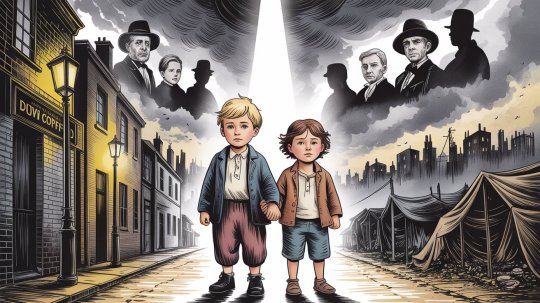
The Pen That Gave the Poor a Voice, Photo by Ideogram
📜 Introduction: A Storyteller Who Never Looked Away
When Charles Dickens died on 9 June 1870, the world lost more than a writer. It lost a voice that dared to see what others ignored — and to tell it with such power that we still feel it today. Dickens did not merely write stories; he built bridges of empathy between the privileged and the poor, between fiction and raw, inconvenient truth.
His greatest heroes were not warriors or kings — they were children, workers, women, and dreamers who struggled in the underbelly of Victorian England. And today, more than 150 years later, their modern counterparts are still here. In the streets of Delhi, in the refugee camps of Gaza, in the sweatshops of Dhaka, and in underfunded schools from Lagos to Los Angeles, children live the same Dickensian nightmares — without protection, without a voice, and without hope.
🧒 A Childhood in Chains: Dickens’ Wounds Became the World’s Warning
To understand Dickens, we must first meet him not as a literary icon, but as a boy. At 12 years old, Charles Dickens was pulled from school and forced to work in a rat-infested shoe-blacking factory in London. His father had been imprisoned for debt, and the family fell apart. These formative years left deep scars — and those scars bled onto the page.
He never forgot the humiliation, loneliness, and fear of childhood poverty. In fact, he never wanted us to forget either. Dickens turned his trauma into literature that gave poverty a face and injustice a name. His characters — often children — were not exaggerated: they were reflections of real life, of real suffering.
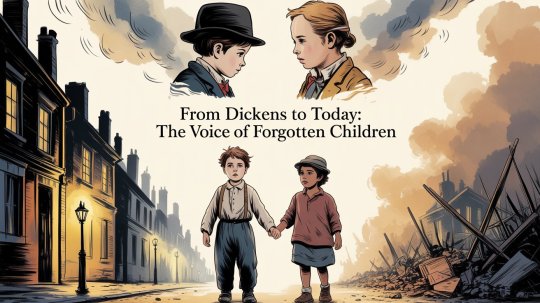
The Voice of Dickens, Photo by Ideogram
📚 Fiction as Resistance: Stories That Sparked a Conscience
Dickens didn’t just write; he confronted. From Oliver Twist and Nicholas Nickleby to David Copperfield, Bleak House, and Hard Times, his novels served as critiques of the systems that allowed suffering to continue — be it the workhouse, the legal system, industrial capitalism, or the apathy of the upper class.
He built empathy with precision:
Oliver, the orphan, introduced the world to the horror of workhouses and child criminal exploitation.
David Copperfield, a semi-autobiographical character, showed us the emotional toll of abandonment and forced labor.
Jo, the street sweeper in Bleak House, died anonymously in the shadows of society — the ultimate indictment of a culture that steps over its poor.
And these were not just characters — they were calls to action.
🌍 Why Dickens Still Matters in 2025: A Mirror to Modern Suffering
What makes Charles Dickens essential today is not nostalgia — it’s urgency. The world he fought to change has not disappeared. It’s merely changed its geography and costume. The exploitation, injustice, and neglect he wrote about are alive in our headlines — only now, they are often global.
👣 Child Labor: A Dickensian Reality in the 21st Century
Today, over 160 million children around the world are trapped in child labor — working in mines, fields, factories, and even on the streets. From the cacao plantations of Ghana to the fast-fashion sweatshops of Bangladesh, children are still forced to trade their childhood for survival.
They are Oliver Twist in torn flip-flops. They are David Copperfield in refugee camps. They are Little Nell — still dying from neglect and exhaustion.
Dickens showed us the horror of making children carry the burdens of adults — and that horror is not fiction in our world today.
☢️ Children of War: The Forgotten Victims
But beyond poverty and labor, the 21st-century child faces a terror Dickens never imagined — war. From Gaza and Ukraine, to Sudan, Myanmar, Syria, and beyond, children are being orphaned, bombed, starved, and displaced. Schools are reduced to rubble. Homes are turned into graves. Futures are stolen in the flash of an airstrike.
These are children who have seen more in ten years than most adults do in a lifetime. They are caught in conflicts they did not choose and cannot escape. They have no Mr. Brownlow, no Micawber, no Dickens to narrate their pain to the world — unless we do it.
They are the Jo of Bleak House, coughing in the cold. They are the nameless children in A Christmas Carol, hiding under the robe of Ignorance and Want.
Dickens once wrote:
"In the little world in which children have their existence… there is nothing so finely perceived and so finely felt as injustice."
That perception still rings true. Today’s children know injustice all too well. What they don’t always have is someone with a voice — like Dickens — to speak for them.
✍️ Dickens, the Reformer: Not Just a Writer
Dickens didn’t wait for politicians to fix things — he used his celebrity to push for change. He gave lectures, funded charities, visited prisons and schools, and used his journals like Household Words to spotlight pressing social issues.
He helped change public attitudes toward:
Child protection
The criminal justice system
Factory conditions
Public education
He helped humanize the working poor in a way that history books and sermons could not.
🔥 Modern Writers, Modern Responsibilities
Dickens’ legacy is also a challenge: Will writers today be as brave?
Too often, modern literature and media focus on escapism. But Dickens reminds us that storytelling has a duty — to confront, to reflect, to heal.
Writers, influencers, educators, and readers must ask:
"Who are today’s Olivers, Davids, and Little Nells? Are we telling their stories — or looking away?"
🕯️ Final Thought: The Fire Still Burns
When we read Dickens, we’re not reading about the past. We’re reading about the moral future we still haven’t built. His genius wasn’t just in character or plot — it was in empathy. It was in forcing his readers to feel what the poor felt, to cry when the child cries, and to act.
Dickens died in 1870. But his pen — sharp, soft, courageous — continues to write itself into our conscience.
The question is: are we listening?
#https://ghamnasr.blogspot.com/
#•#CharlesDickens#ChildLabor#WarChildren#StorytellingMatters#SocialJustice#VictorianLiterature#LiteratureWithPurpose#GlobalPoverty#ModernSlavery#WritersOfMedium#DavidCopperfield#OliverTwist
0 notes
